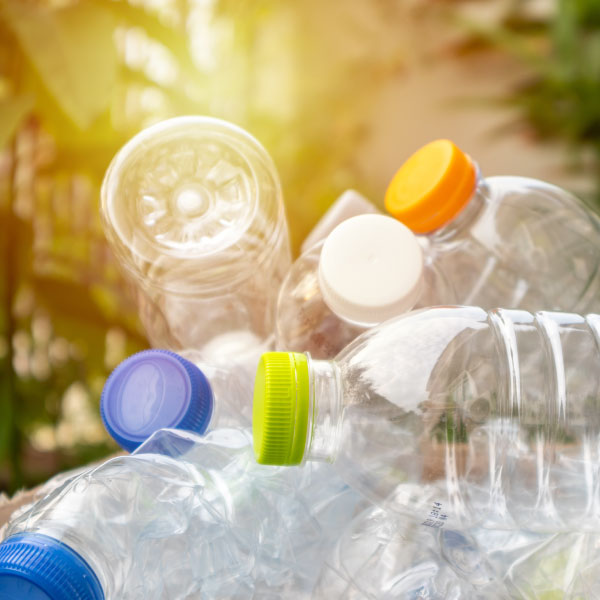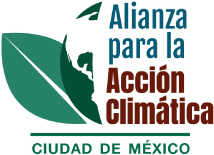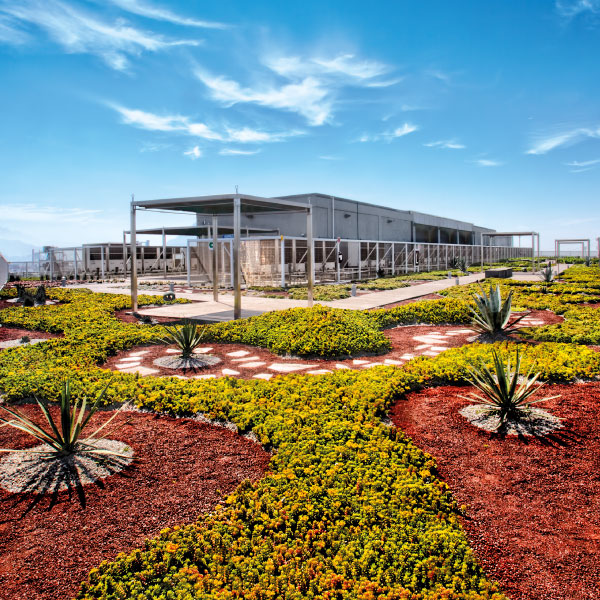17.04
GJ/employee
2.28
tCO2e/employee
509K m3 of water consumed
1,231.7 metric tons of waste sent for recycling
We have an environmental policy aligned with regulatory frameworks, national and international initiatives.

Our institutional framework includes an Environmental Policy aligned with current laws and regulations, national and international initiatives, and the ISO 14000 international standard, which encompasses the following aspects:
In addition, our environmental impact matrix enables us to identify elements of the current environmental laws and regulations that apply to our industry, and to manage 128 aspects that involve six possible environmental impacts, which may translate into current or emerging risks to the environment.
103-1, 103-2, 103-3
Because of nationwide restrictions imposed in light of the COVID-19 public health emergency, 2020 was an atypical year for the Group’s environmental performance.
Some of the indicators regarding our consumption of resources were improved simply by the physical absence of 80% of our employees from our administrative buildings.
302-1, 302-3, 302-4, 302-5
Our network of Banorte branches functions according to the Comprehensive Energy Control System. All of them have high-efficiency equipment that work automatically to regulate energy consumption.

| Indicators | 2018 | 2019 | 2020 | % chge. 20/19 |
|---|---|---|---|---|
| Energy use* | (GJ) | (GJ) | (GJ) | |
| Natural gas | n/a | 154.29 | 11.93 | -91.60% |
| Diesel | 3,191.15 | 2,221.49 | 3,422.64 | 54.07% |
| LP Gas | 1,093.66 | 1,193.93 | 906.40 | -24.08% |
| Gasoline | 55,136.27 | 54,912.79 | 43,687.09 | -20.44% |
| Electricity | 467,537.15 | 484,045.70 | 461,727.42 | -4.61% |
| Grupo Financiero Banorte | 526,466.18 | 542,373.91 | 509,743.55 | -6.0% |
| GJ per employee | 17.23 | 17.98 | 17.04 | -5.2% |
| GJ per MXNmn net income | 16.47 | 14.85 | 16.71 | 12.5% |
| Employee scope | 100% | 100% | 100% | |
| Factors used (CONUEE) | 2019 | 2020 | 2021 |
Emission intensity was calculated based on 29,920 employees, including full-time employees, independent contractors and other professional service suppliers, and net income of Ps. 30.51 billion.
Using monitoring equipment in the network of administered buildings, in 2020 we ran a program to automatically shut down computers outside of working hours. The result was savings of Ps. 1.78 million, a reduction of 711.013 MWh of electricity, equivalent to 359.1 metric tons of CO21 avoided.
As regards our energy matrix, in 2020 we followed up on our contract with Thermion to supply 70% of the energy we consume from renewable sources, specifically the Delaro wind farm. By the end of the year Delaro had obtained various permits and will attempt start operations in 2021. If it is successful, we expect to reduce the Group’s GHG emissions by close to 50%.
305-1, 305-2, 305-3, 305-4, 305-5, 305-6

| Business unit | 2018 | 2019 | 2020 | % chge. 20/19 | ||||||
|---|---|---|---|---|---|---|---|---|---|---|
| A1 | A2 | A1+A2 | A1 | A2 | A1+A2 | A1 | A2 | A1+A2 | ||
| Afore XXI Banorte | 198.54 | 1,969.06 | 2,167.60 | 184.57 | 1,893.99 | 2,078.56 | 162.52 | 1,258.26 | 1,420.79 | -31.64% |
| Almacenadora Banorte | 44.89 | 138.69 | 183.58 | 102.00 | 101.31 | 203.31 | 204.52 | 101.52 | 306.04 | 50.53% |
| Arrendadora y Factoraje Banorte | 108.67 | n/a | 108.67 | 86.93 | n/a | 86.93 | 57.66 | n/a | 57.66 | -33.67% |
| Banorte | 1,667.11 | 64,475.44 | 66,142.55 | 1,752.67 | 64,137.23 | 65,889.90 | 1,406.95 | 62,192.16 | 63,599.11 | -3.48% |
| Banorte-Ixe Securities International | n/a | 15.23 | 15.23 | n/a | 15.78 | 15.78 | n/a | 24.24 | 24.24 | 78.97% |
| Seguros y Pensiones Banorte | 2,183.28 | 1,799.30 | 3,982.58 | 2,084.61 | 1,709.01 | 3,793.62 | 1,633.66 | 1,173.13 | 2,806.79 | -26.00% |
| Grupo Financiero Banorte | 4,202.51 | 68,397.71 | 72,600.21 | 4,210.78 | 67,857.31 | 72,068.08 | 3,465.31 | 64,749.32 | 68,214.63 | -5.34% |
| tCO2 per employee | 2.38 | 2.39 | 2.28 | -4-56% | ||||||
| tCO2 per MXNmn net income | 2.27 | 1.97 | 2.24 | 13.33% | ||||||
| Employee scope | 100% | 100% | 100% | |||||||
1. We used the electrical emissions factor from 2019 because the figure for 2020 had not been published at the time this report went to press.
One of the most significant changes resulting from the current situation was the increase in remote work and virtual meetings, which enabled us to practically eliminate employee mobility. Corporate travel by air covered only 4.7 million kilometers in 2020, associated with 500.6 metric tons of CO2e emitted into the atmosphere, 74.9% less than in 2019. This was because with the pandemic much of the Group’s activity shifted to remote work and this modified the corporate travel policy.
Our commercial activity was deemed essential by the authorities, so our branch employees and call centers continued to operate physically. But to encourage carpooling, taking into account the necessary safety measures, we signed an agreement with Waze Mexico, in which more than 300 employees in Mexico City and Monterrey are active participants.
As part of this alliance, studies were conducted to understand our employees’ commuting habits, in order to provide them a safe and efficient mode of transport from home to work. With this carpooling initiative, in 2020 we avoided more than 65,000 kilometers of physical travel and reduced CO2 emissions by 12.8 metric tons.
Emissions from refrigerant recharges totaled 5,894.6 metric tons of CO2e, 58.8% of which came from R-134, R-404 and R-410 gas (which does not affect the ozone layer) and the rest from R22 gas. The scope of this calculation includes the facilities of Banorte and Afore XXI, accounting for 93.8% of employees. Furthermore, since 2015 Banorte has acquired no equipment that uses R22 gas.
301-1, 306-1, 306-2, 306-3, 306-4
Based on the results of the waste separation program introduced at our Santa Fe corporate Offices, we estimated waste generation based on the kilograms/employee indicator1, counting recyclable and non-recyclable inorganic waste as well as organic waste.
Assuming similar results in all our locations with the same economic activity, we extrapolated this indicator to 112 administrative buildings with a scope of 45.7% of our total employees work and arrived at a total generation of 1,364.2 metric tons of waste generated.
With this program we were able to channel 1,231.7 metric tons to recycling2, from which 6.9 metric tons of recyclable waste were recovered and donated to various social causes, such as maintenance and recovery of school furniture. In an alliance with BioBox, we installed 17 machines for exchanging PET bottles and aluminum cans for rewards, resulting in the collection of more than 15.7 metric tons of recyclable waste.
Furthermore, we promoted the efficient use of paper in our operations through the use of digital media and cross selling to reduce consumption.

One of the strategies implemented is our Origina program, which optimizes contract formats and reduces the number of pages in each contract. This initiative eliminated the printing of approximately 7 million sheets, equivalent to 32.2 metric tons of paper.
Together with this, we applied technological changes in the management and printing of account statements for Mujer Banorte, Cuenta Preferente and Enlace Personal accounts. In 2020 we continued to promote paperless strategies to reduce the amount of printed account statements sent to clients’ addresses. During the reporting year, 202,000 accounts went paperless from which we saved approximately Ps. 5 million and 16.6 metric tons of paper.
Also, through an application called Papercut we were able to efficiently administer 419 multifunctional printers in banking industry corporate buildings and control the number of printouts per user. The scope included all users at Banorte with which we avoided 545,000 printouts, or 2.5 metric tons of paper saved.
We also encouraged clients to skip the printout of their vouchers at ATMs, reducing them by 20.0% compared to 2019, equivalent to 52.3 metric tons of paper and a savings of Ps. 1.2 million.
Another initiative was the “Mobile Adjuster”, with which we serve almost 164,000 clients in the Insurance and Pensions business. With this system, clients enter their claim statement on a tablet and handling orders are issued electronically via an e-mail to the insured party. This avoided the consumption of 1.3 million sheets, or 5.9 metric tons of paper.
303-5

| Consumption | 2018 | 2019 | 2020 | % chge. 20/19 |
|---|---|---|---|---|
| Water m3 | 668,223 | 714,835 | 509,599.9 | 28.7% |
| Water m3/employee | 21.87 | 23.70 | 17.03 | -28.1% |
| Employee scope | 99% | 100% | 100% |
Based on our water expenses and the average price for each state, we estimate water consumption of 509,599.9 m3. The water we use comes from the public water supply and is channeled to the local sewer systems where we operate.
To ensure a more efficient use of this vital resource, our corporate buildings have water-saving devices installed in its sinks, and dry, odorless low-consumption urinals. Furthermore, we have rainwater capture systems installed on our rooftops, along with conventional gutters in two of our most densely occupied buildings, creating a network of conduits for carrying the rainwater toward a cistern.
103-1, 103-2, 103-3
Aligned with the Nationally Determined Contributions Mexico assumed in the Paris Agreement, we had a goal of reducing by 30% our energy intensity per employee by 2020, against the base year 2009. Although we did not meet that goal, we did achieve a reduction of 71.8%. The reason for the shortfall was primarily the lack of supply of renewable energy, given current circumstances in the Mexican energy market.
2009
2010
2011
2012
2013
2014
2015
2016
2017
2018
2019
2020
We will be working on updating this target in 2021.
Additionally, since 2016 we have been committed to the Science Based Targets (SBT) initiative for setting medium and long-term reduction goals based on international scientific standards. According to the C-Fact methodology published by Autodesk, we have set absolute and intensity targets, and we report on our progress each year in the CDP questionnaire.

On November 12, 2020, we joined the Mexico City Alliance for Climate Action (ACA-CDMX) which is aimed at creating and strengthening synergies to mitigate and adapt to climate change. These include a climate diagnosis, roadmap, proposed solutions and concrete actions to improve quality of life for the city’s citizens in the short and medium terms and position the climate crisis agenda at the local and state level. This is intended as an active contribution to the Paris Agreement target of keeping the average increase in global temperature to below 1.5° C.
ACA-CDMX is an initiative of the World Wildlife Fund and the Mexico City Climate Initiative, together with the Mexico City Ministry of the Environment. Other companies participating in this alliance are Academia Mexicana de Energía, A. C., Centro Mario Molina, Cabify, CEMDA, ManpowerGroup, Toks, WRI México and the Universidad Autónoma Metropolitana.
Due to climate events, 112 of our branches had to close temporarily last year. The physical impact totaled approximately Ps. 345,000 in infrastructure damage, and we estimate the loss of close to Ps. 19.8 million in net income from the interruption in services totaling approximately 870 hours.
Among the preventive measures we have in place are 16 first-response sub-committees involving 498 individuals from 16 regions of Mexico, and a command central equipped to monitor high-impact weather phenomena live. In 2020, the central tracked 52 such phenomena. Additionally, 223 active brigade members conducted an annual in-person theoretic and practical training; 91% of the personnel selected participated in the training, which consisted of five modules. This program had a total cost of Ps. 6.8 million.
Finally, we have a resilience plan to ensure business processes and the efficient return to operations following meteorological crises at eight branches, at a total cost of Ps. 12 million.

304-3, 304-4
We encourage the sustainable use of urban spaces. Our primary axis of action is our green rooftop, located in the Roberto González Barrera Contact Center in Monterrey, Nuevo León. The rooftop has 1,784 m2 of landscaped area, which holds 72 species of Mexican plants, 13 of them classified under environmental protection standard NOM-059-SEMARNAT-2010.
We created a Green Rooftop Review Guide to provide training in environmental matters to employees, which includes the context and importance of green spaces, their environmental and social benefits, their contribution to the SDG, and other topics.
Together with the Reino Animal theme park and nature preserve, for the second year in a row we participated in the release of two red-tailed hawks in the state natural protected area of Cerro Gordo and donated to the park the telemetry systems needed to modify these specimens. The action is part of the restoration of the Teotihuacan valley ecosystem, helping to promote preservation of biodiversity among local inhabitants.
Another of the efforts made in conjunction with Reino Animal was joining the binational Mexico-US project to rescue the Mexican wolf. To preserve the species and improve the health of these animals and achieve a balance with educational visits, we had three female Mexican wolves brought to Reino Animal from the Los Coyotes zoo in Mexico City.
“
We created a Green Rooftop Review Guide to provide training in environmental matters to employees.”
103-1, 103-2, 103-3
We promote environmental education focusing on various stakeholders, particularly suppliers, and, internally, our employees. Throughout the year we offered various workshops and training programs for employees, dealing with topics like:
In a complementary effort, we aired an exhibit of photographs showing the importance of preserving biodiversity in global ecosystems.
We also delivered a lecture to employees of Fundación Helvex regarding climate change mitigation, attended by around 45 people from various areas of specialization.
